Definition
Chronic massive rotator cuff defect
- uncovered humeral articular cartilage
- high riding humeral head
- abrasion by undersurface of coracoacromial arch
History
Neer
- introduced term "cuff tear arthropathy"
- included significant rotator cuff diagnosis & arthritis in older patients
- especially women
- synovial fluid contained calcium phosphate crystals + proteases
Aetiology
Crystal induced arthropathy
- hydroxyapatite-mineral phase in altered capsule, synovium or degenerate articular cartilage
- induce synthesis of proteolytic enzymes
- destruction of cartilage via collagenase, stromeolysin
- origin of crystals unclear
- 1° or 2° to arthritis
- erosion of head begins superiorly rather than centrally
Cuff tear theory
- loss of cuff leads to mechanical and nutritional alterations in shoulder
- due to loss of closed joint space and altered range of motion
Incidence
4% of massive cuff tears go on to arthroplasty
Theory
- tears with unbalanced force couplet go on to arthropathy
- massive tear that are balanced & / or above equator don't go onto to arthropathy
Epidemiology
Women > men
60% bilateral
Symptoms
Recurrent swelling
Loss of Motion
Night pain
Xray
1. Superior migration of head
- defined as AHI / acromiohumeral interval of 7mm or less
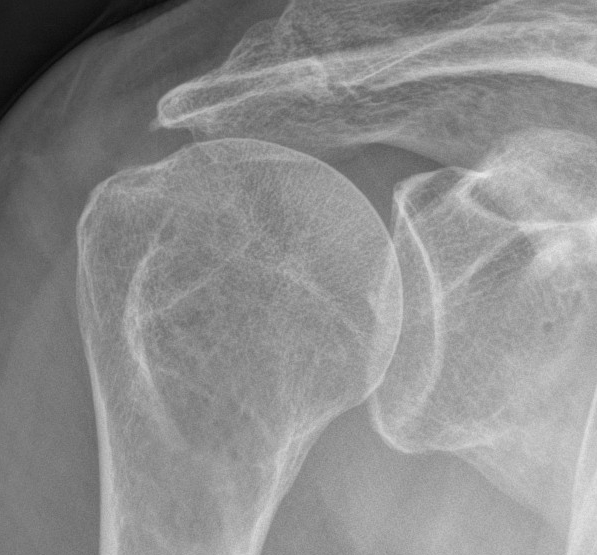
2. Collapse of proximal head articular surface
3. Proximal humerus becomes "Femoralized"
- erosion of greater tuberosity
4. Coracoacromial arch becomes "acetabularized"
- often articulates with acromion
- periarticular soft tissue calcification
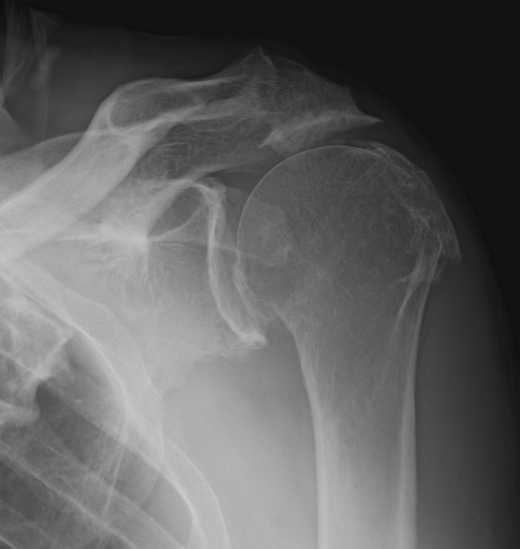
CT
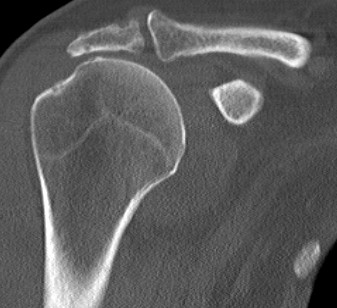
DDx
GH OA
- no superior migration
- beard osteophytes
Management
Non-Operative
Often appropriate
- many patients only mild symptoms
- patients elderly
- accept limited ROM
- analgesia
Operative Management
1. Acromioplasty & tendon debridement
Not indicated with superior migration
- can consider biceps tenotomy if still intact
2. Arthrodesis
Poorly tolerated in elderly
- significant pseudoarthrosis & re-operation rate in osteoporotic bone
- reserve for those with non functioning deltoid
3. TSR
Increased loosening of glenoid component if TSR
- superior migration of head due to unopposed deltoid
-"rocking horse" phenomenon
4. Hemiarthroplasty
Indications
- < 70
- intact CA arch
- anterior deltoid muscle
Technique
- do not oversize head
- can cut in some valgus to allow articulation with acromion
- correct size allows arm to lie freely across abdomen
- head to translate 50% posterior / anterior / inferior
- subscapularis to be re-attached without bow stringing
- margin convergence of cuff as possible for force couplet
- reattach CA ligament to prevent superior escape
Results
Rockwood
- 18 of 21 satisfactory
- good pain relief
- ROM often not improved
Neer
- concept of limited goals category
- 20° of ER and 90° of forward elevation
Poor prognosis
- previous acromioplasty
- previous division CA ligament
- deltoid insufficiency
5. CTA Humeral Head
Depuy Cuff Tear Arthropathy
- arc of surface > 180o
- allows articulation of lateral head with acromion
- increased articulation in abduction and ER
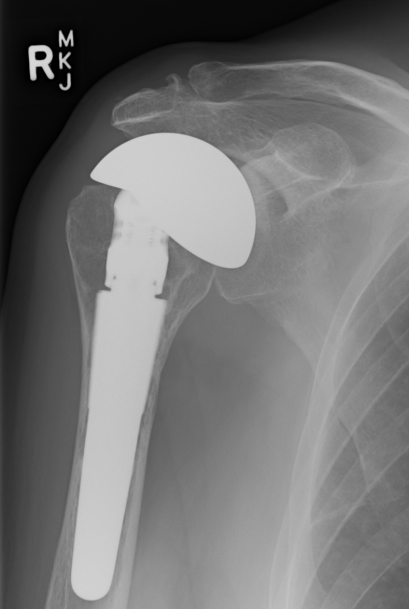
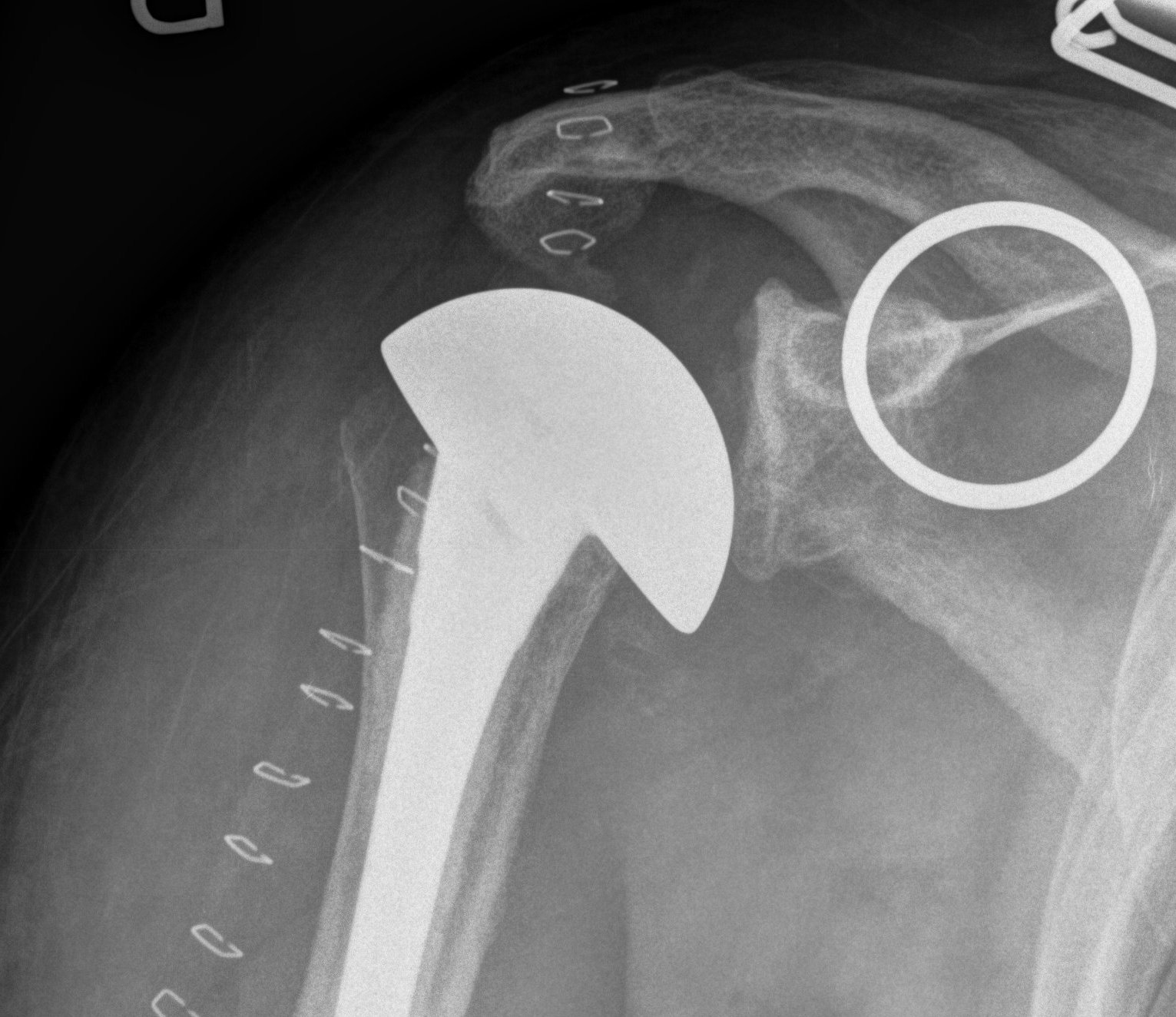
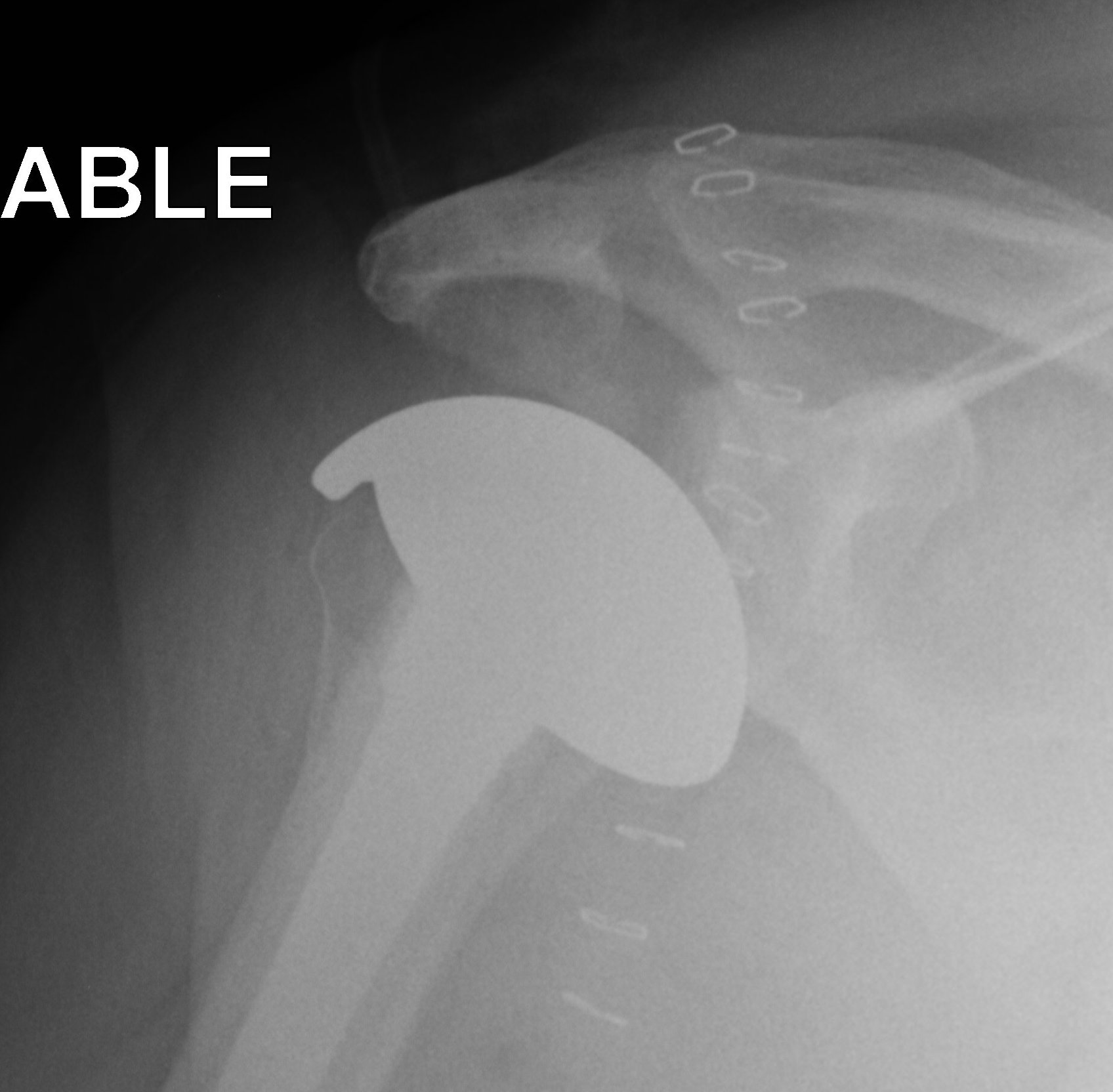
6. Reverse TSR
Indications
- > 70
- functioning deltoid
Concept
- medialises the centre of rotation
- increases lever arm for deltoid
- semiconstrained - prevents superior migration
- deltoid acts to stabilise shoulder
